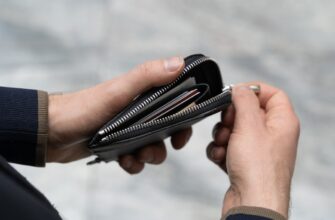🎮 Level Up with $RESOLV Airdrop!
💎 Grab your free $RESOLV tokens — no quests, just rewards!
🕹️ Register and claim within a month. It’s your bonus round!
🎯 No risk, just your shot at building crypto riches!
🎉 Early birds win the most — join the drop before it's game over!
🧩 Simple, fun, and potentially very profitable.
## Introduction
In the world of cryptocurrency, your private key is the ultimate key to your digital wealth. Lose it, and your assets vanish forever. Expose it, and hackers can drain your accounts instantly. Cold storage—keeping your private keys completely offline—is the fortress-like solution trusted by security experts. This step-by-step guide demystifies how to protect your private keys using cold storage methods, ensuring your crypto remains impervious to online threats while putting you in full control.
## Why Cold Storage is Non-Negotiable for Security
Hot wallets (connected to the internet) are convenient but vulnerable. They face constant risks: malware, phishing attacks, exchange hacks, and remote exploits. Cold storage eliminates these threats by isolating your private keys from any network. By going offline, you create an “air gap” that even sophisticated hackers can’t breach. Whether you’re safeguarding Bitcoin, Ethereum, or other assets, cold storage is the gold standard for long-term protection.
## Step 1: Understand Your Private Key Fundamentals
– **What it is**: A private key is a 256-bit alphanumeric string (e.g., `E9873D79C6D87DC0FB6A5778633389…`) mathematically linked to your public address.
– **Why it matters**: Whoever holds this key controls your funds—no reversals, no recourse.
– **Golden rule**: Never store it digitally (no screenshots, cloud notes, or email drafts).
## Step 2: Choose Your Cold Storage Method
Select based on security needs and budget:
1. **Hardware Wallets** (e.g., Ledger, Trezor):
– Dedicated offline devices with PIN protection
– Supports multiple cryptocurrencies
– $50–$200 cost
2. **Paper Wallets**:
– Private keys printed on paper
– Free but vulnerable to physical damage
3. **Metal Backups** (e.g., Cryptosteel, Billfodl):
– Fire/water-resistant engraved metal plates
– Ideal for long-term “disaster-proof” storage
## Step 3: Generate Keys Offline—Safely
Follow this critical process:
1. Use a clean computer **never connected to the internet**.
2. Download open-source wallet software (e.g., Electrum for Bitcoin) via USB from a trusted source.
3. Disable Wi-Fi/Bluetooth and disconnect all cables.
4. Generate keys within the offline software.
5. **Never** type keys—copy/paste or scan QR codes to avoid keyloggers.
## Step 4: Store Physical Backups Securely
For paper/metal keys:
– Laminate paper wallets or seal in waterproof bags.
– Store in multiple locations: home safe, bank vault, trusted family member’s house.
– Use tamper-evident bags to detect unauthorized access.
For hardware wallets:
– Keep recovery seed phrases (24 words) separate from the device.
– Never digitize seed phrases—store them as physical copies only.
## Step 5: Verify and Test Your Setup
Avoid catastrophic errors:
1. Send a **tiny amount** of crypto (e.g., $5) to your new cold address.
2. Recover access offline using your private key/seed phrase.
3. Confirm transaction visibility in a blockchain explorer (using a separate online device).
4. Only transfer full balances after successful verification.
## Step 6: Maintain Ironclad Operational Security
– **Updates**: Regularly check hardware wallet firmware (always verify via official sites).
– **Access**: Restrict physical access—use safes or vaults. Never share locations.
– **Backups**: Replace paper backups every 3–5 years; check metal for corrosion.
– **Legacy planning**: Share access instructions with a trusted person via sealed letter.
## Critical Mistakes to Avoid
– Using online generators or compromised software
– Storing keys on USB drives (prone to failure/malware)
– Photographing keys or seeds with smartphones
– Ignoring multi-location backups (single point of failure = high risk)
## Frequently Asked Questions (FAQ)
### Q: Can I use a regular USB drive for cold storage?
A: **No.** Standard USB drives are unreliable and vulnerable to malware. Hardware wallets use secure elements designed to thwart physical tampering.
### Q: How often should I check my cold storage?
A: Physically inspect backups every 6 months for damage. Verify accessibility annually without moving funds.
### Q: Is it safe to laminate paper wallets?
A: Yes—use non-thermal laminators (heat can damage ink). Store multiple copies to mitigate wear.
### Q: What if my hardware wallet breaks?
A: Your funds are safe! Restore access via your seed phrase on a new device. Never input seeds online.
### Q: Can governments seize cold storage assets?
A: Only if they physically confiscate your backup. Diversified storage locations mitigate this risk.
### Q: Are biometrics (fingerprint) secure for hardware wallets?
A: Biometrics add convenience but aren’t foolproof. PIN codes + seed phrases remain the core security layer.
## Final Thoughts
Protecting private keys in cold storage isn’t just technical—it’s a discipline. By meticulously following these steps, you transform vulnerability into unwavering control. Start small: secure a portion of your crypto offline, master the process, then scale up. In the volatile landscape of digital assets, cold storage isn’t an option; it’s your unbreachable vault. Take action today—your future self will thank you.
🎮 Level Up with $RESOLV Airdrop!
💎 Grab your free $RESOLV tokens — no quests, just rewards!
🕹️ Register and claim within a month. It’s your bonus round!
🎯 No risk, just your shot at building crypto riches!
🎉 Early birds win the most — join the drop before it's game over!
🧩 Simple, fun, and potentially very profitable.








